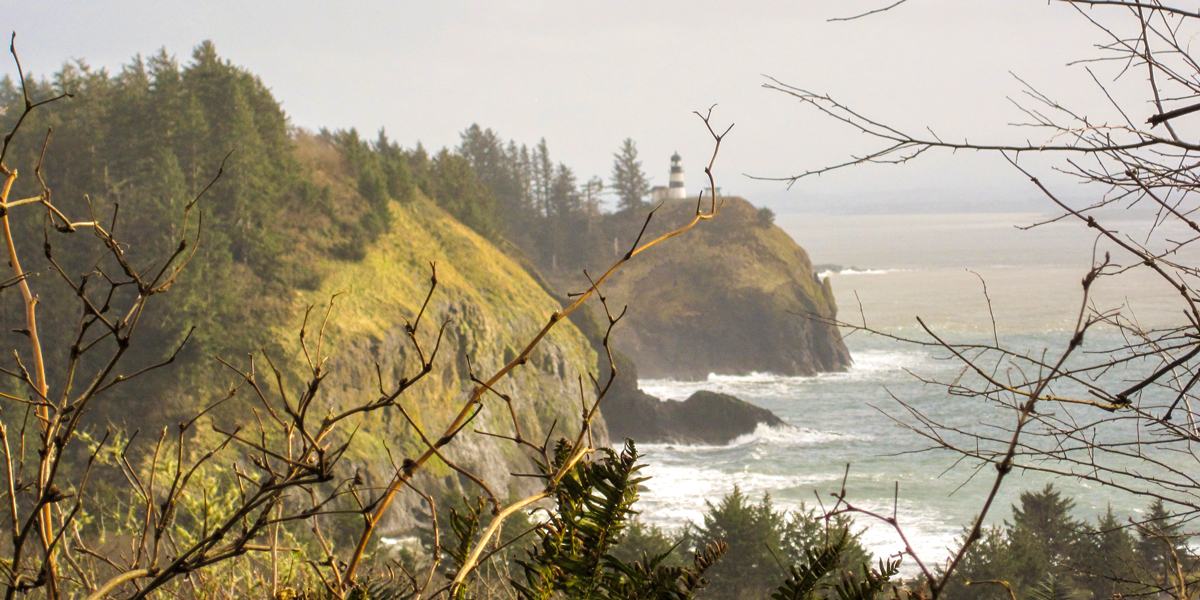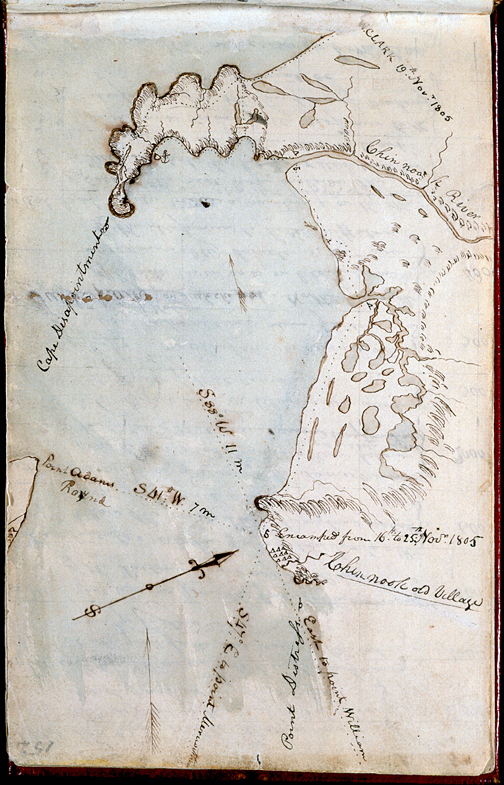Station Camp near Chinook, WA Clark takes a group to view the Pacific Ocean. On the way, they collect a California condor specimen and mark their names on trees. The men behold “with estonishment the high waves dashing against the rocks & this emence ocian.”
Clark as a Tour Guide[1]Originally aired weekdays by Yellowstone Public Radio during the Bicentennial observance of 2003-2006. Narrated by Hal Hansen. Scripts by Whit Hansen and Ed Jacobson. Produced by Leni Holliman. © … Continue reading
Dashing Waves
View from Mackenzie Head (North)
© 18 December 2015 by Kristopher K. Townsend. Permission to use granted under the Creative Commons Attribution-Share Alike 4.0 International license.
the waves appear to brake with tremendious force in every direction quite across a large Sand bar lies within the mouth nearest to point Adams which is nearly covered at high tide . . . . men appear much Satisfied with their trip beholding with estonishment the high waves dashing against the rocks & this emence ocian.
—William Clark
Wallacut Village
N. W. 7 Mile to the enterance of a creek at a lodge or cabin of Chinnooks [Chinooks] passing on a wide Sand bar the bay to my left and Several Small ponds Containing great numbers of water fowls to my right; with a narrow bottom of alder & Small balsam between the Ponds and the Mountn. at the Cabin I saw 4 womin and Some Children one of the women in a desperate Situation, covered with Sores Scabs & ulsers no doubt the effects of veneral disorder which Several of this nation which I have Seen appears to have.
—William Clark
California Condor Specimen
Rubin Fields Killed a Buzzard of the large Kind near the meat of the whale we Saw: W. 25 lb. measured from the tips of the wings across 9½ feet, from the point of the Bill to the end of the tail 3 feet 10¼ inches, middle toe 5½ inches, toe nale 1 inch & 3½ lines, wing feather 2½ feet long & 1 inch 5 lines diamiter tale feathers 14½ inches, and the head is 6½ inches including the beak.
—William Clark
Marking the Anchorage
this rock Island is Small and at the South of a deep bend in which the nativs inform us the Ships anchor, and from whence they receive their goods in return for their peltries and Elk Skins &c. this appears to be a very good harber for large Ships. here I found Capt Lewis name on a tree. I also engraved my name & by land the day of the month and year, as also Several of the men.
—William Clark
Station Camp Activities
In the evening our hunters came in with a deer, 2 brants, a squirrel, a hawk, and a flounder, which the tide had thrown on a sand-bar. The Indians still remained with us, and Capt. Lewis got a specimen of their language.
—Patrick Gass
Weather Diary
Day of the month Wind State of the Weather 18th S. E fair after clouds Cloudy Reubin Field Killed a Vulture [Clark:] I proceed to the Ocean.
—Meriwether Lewis[2]Some abbreviations have been spelled out.
Middle Village-Station Camp is a High Potential Historic Site along the Lewis and Clark National Historic Trail managed by the U.S. National Park Service. The site provides interpretation and is part of the Lewis and Clark National and State Historical Parks.
Cape Disappointment is a High Potential Historic Site along the Lewis and Clark National Historic Trail managed by the U.S. National Park Service. The site is a Washington State Park.
Notes
| ↑1 | Originally aired weekdays by Yellowstone Public Radio during the Bicentennial observance of 2003-2006. Narrated by Hal Hansen. Scripts by Whit Hansen and Ed Jacobson. Produced by Leni Holliman. © 2003 by Yellowstone Public Radio. |
|---|---|
| ↑2 | Some abbreviations have been spelled out. |




